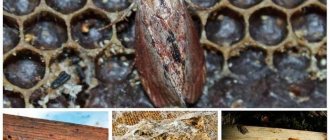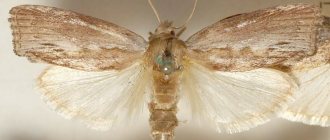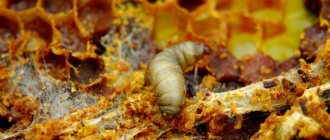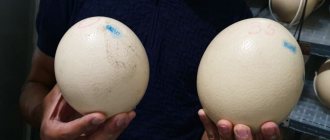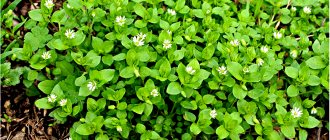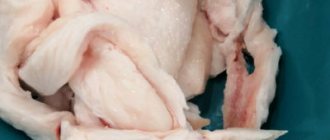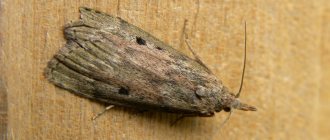- What is a bee moth?
- Medicinal properties of bee moth tincture
- How to take wax moth
- Directions for use and doses
- Contraindications
- Wax moth for tuberculosis
- Wax moth in oncology
- Flame for vessels
- Fire from pressure
- Fire from parasites
- Wax moth for cough
- Fire for the thyroid gland
- Fire for joints
- Fire for the eyes
- How to store the tincture
Wax moth (moth, bee moth) is the main pest of bee honeycombs, at the same time it is a unique beekeeping product useful for humans.
People learned about its healing properties during the times of Ancient Egypt - with the help of the insect, centenarians strengthened their immune system, restored strength and prolonged youth. Today, wax moths are propagated under artificial conditions in order to prepare medicinal products and sell them on an industrial scale.
What is a bee moth?
The bee moth is a species of nocturnal gray moth, family of moths. It is the only insect in the world that eats biologically active raw materials: honey, wax, beebread and pollen - this explains its natural healing power. In the process of active life, the caterpillars lay eggs in honeycombs, damage the offspring of bees, after which they entwine them with cobwebs and destroy the hive.
The wax moth preparation consists of many natural elements:
- amino acids (glutamic, aspartic acid);
- biological components, lipase, valine, proline;
- zinc, potassium, magnesium, phosphorus and other trace elements.
Attention!
Large wax moth larvae are capable of producing cerrase. The enzyme has a broad therapeutic effect, helps with many diseases, and restores all processes in the human body.
Due to their animal origin, bee moth larvae are used in folk medicine. Tinctures, extracts and extracts are made from them. For external use, ointments and creams are popular. Thanks to reviews of the moth, medications in the form of granules, capsules and tablets have become in demand.
Effectiveness of steroids
Finally, they contain steroids. These are almost complete analogues of plant and animal biologically active compounds that have anti-inflammatory and anabolic properties. Once in the body, they help enhance metabolic processes and are able to quickly relieve pain from muscle tension. Due to these healing properties of moth excrement, preparations based on them are recommended for neuromuscular diseases.
It is worth noting that the deciphering of the chemical composition of these excrements has not yet been completed. Therefore, some new useful qualities and properties may be discovered. In this regard, some scientists consider this raw material to be very promising for pharmaceuticals.
Medicinal properties of bee moth tincture
Moth tincture has a general strengthening, antibacterial, antimicrobial, antifungal and regenerating effect.
The medicinal properties of bee tincture are as follows:
- improving metabolism, removing waste and toxins from the body;
- regulation of blood pressure, prevention of heart and vascular diseases;
- normalization of glucose, cholesterol and hemoglobin levels in the blood;
- activation of energy metabolism, prevention of blood clots;
- improving the functioning of the nervous system, combating stress and fatigue;
- stimulation of healthy functioning of the reproductive system (infertility treatment);
- normalization of gastrointestinal tract functions;
- counteraction to viruses, infections, radioactive radiation;
- increasing mental and physical performance indicators;
- increased muscle mass, improved endurance during exercise;
- prevention of aging processes, beneficial effects on the skin.
What does wax moth tincture help with? The product is taken for respiratory diseases. Indications for use are: hemorrhoids, thrombophlebitis, anemia, atherosclerosis, oncological tumors.
Tincture of wax moth (moth) is effective for pathologies of the reproductive system. It eliminates the symptoms of toxicosis during pregnancy, promotes rapid conception, increases the speed of sperm, fights impotence and low libido.
Indications for use
The butterfly larvae, which have not turned into pupae and have not grown to a size of 2 cm, are used in the production of an effective healing substance.
Tincture of wax moth (the second name of the insect) is indicated for use for therapeutic purposes for an extensive list of diseases and pathologies:
- Tuberculosis of organs and systems: meninges, gastrointestinal tract, peripheral lymph nodes, kidneys, joints, urinary, respiratory, central nervous, locomotor systems. Thanks to the enzyme cerrase, the moth and its larvae digest wax. The cell membrane of Koch's bacillus, a mycobacterium that is the causative agent of the disease, has much in common with the wax that impregnates honeycombs. It is broken down by enzymes from the larvae extract, which increases the effectiveness of antibiotic therapy and prevents infection from penetrating into neighboring tissues. In addition, the product provokes the formation of capable cells and tightening of cavities.
- Cardiovascular diseases. In the acute stage of myocardial infarction, the product smoothes and resolves scars, prevents their formation, heals necrotic areas, increases healthy myocardial cells, which accelerates the process of restoring the functions of cardiomyocytes. Increases resistance to angina pectoris, coronary heart disease, arrhythmia. Significantly reduces signs of heart failure, normalizes heart rhythm during bradycardia and tachycardia. Minimizes shortness of breath. It is a prophylactic agent that prevents the development of these diseases.
- Malignant neoplasms. The use of tincture significantly facilitates the course of the disease due to its powerful antitumor, anti-inflammatory, and analgesic properties. The immune system is strengthened, metabolism is enhanced, and the general condition improves. The impact of side effects from taking medications, including antibiotics, is mitigated. The rate of spread of metastases decreases, damaged cells are restored.
- Diabetes. Cerrase breaks down plaques that appear in blood vessels, stabilizes blood sugar levels, and normalizes brain activity. Increases hemoglobin in diabetic anemia. The product copes well with trophic ulcers, which are a consequence of diabetes mellitus.
- Diseases of the digestive system. The product normalizes the activity of the digestive organs, including the liver, stomach, pancreas, etc. Indicated for use in cases of cholecystitis, hepatitis, gastritis, pancreatitis, and ulcers.
- Thyroid problems. Treatment is effective regardless of the level of iodine in the body. Reception is recommended with simultaneous intake of bee death.
- Pathologies of the male and female reproductive systems. The tincture has shown itself remarkably as a healing product for impotence, weakened erectile function, libido, low sperm motility, premature ejaculation, prostate adenoma, infertility of various forms, miscarriages, toxicosis during pregnancy. It alleviates menopausal symptoms in women, not only restoring the structure of endometrial cells, but also normalizing the psychological background, improving sleep, and increasing performance. Improves blood circulation in the uterine area, increasing the chances of bearing a fetus.
- Diseases of the respiratory-respiratory system. Taking the drug is recommended for bronchitis, including in children, pneumonia, pleurisy, asthma, emphysema, and colds. Reduces any cough, regardless of the cause of its occurrence. Improves the drainage function of the lungs.
- Viral and bacterial infections. When the epidemiological threshold increases, including for influenza, it is a highly effective product, both preventive and therapeutic, even in the absence of positive results from the use of antibiotics. Minimizes the likelihood of complications. Helps with herpes.
- Nervous disorders, depressive states. Possessing psychotropic properties, tincture of moth larvae has a positive effect on the human condition in various nervous disorders, nervous exhaustion, depression, and during periods of stress. Improves mood, strengthens memory, relieves frequent headaches and chronic fatigue.
- Hypertension, hypotension. Helps strengthen blood vessels, their elasticity, dissolves cholesterol plaques in them, and prevents the development of atherosclerosis. Accelerates the process of blood movement through the vessels of the circulatory system. Normalizes blood pressure.
- Joint diseases. The use of tincture has a beneficial effect on the condition of joints with arthrosis and osteochondrosis.
In addition to the therapeutic effect, the tincture of moth larvae protects against premature aging, improves the condition of the skin, makes it more elastic, and eliminates wrinkles and sagging. Athletes take it during increased physical activity to increase muscle mass and tissue regeneration. In surgery, the product is actively used in the postoperative period due to its ability to prevent the appearance of scars.
Wax moth larva.
How to take wax moth
Now let's talk about how to take wax moth extract.
The minimum course is 3 months, the maximum is a year. If you take it for a long time, you should take a break for 2 weeks, then continue treatment as usual.
Before taking the wax moth tincture, it should be dissolved in water. The best effect is achieved when taken under the tongue. The product must be held in the mouth and then swallowed. It is advisable to do this on an empty stomach, half an hour before meals.
Interesting!
To obtain raw materials, beekeepers place honeycombs in the hive for 6 months until a substance in the form of insect excrement forms on them. After this, they are processed and saturated with enzymes. When preparing the tincture, the product acquires a light brown tint and has a honey-protein smell.
In sports
Wax moth extract has a positive effect on muscles ; as a result of the interaction of the components, the recovery period after heavy loads is reduced.
The elements included in the substance affect endurance, help accelerate the growth of muscle mass, its use activates the production of hemoglobin and the rate of calcium absorption. Preparations created on its basis are indispensable for the recovery of athletes after injury or surgery.
According to the results of the study, the drug is an excellent alternative to dangerous anabolic steroids that negatively affect the central nervous system. It can be used not only to build muscle, but also to remove the body from the state it gets into under the influence of steroids.
Directions for use and doses
The use of moth tincture is simple. The product must be consumed in the same quantity, regardless of the type and form of the disease, its duration, and the individual characteristics of the body. Before treatment, consultation with a doctor is required.
- The recommended dose for children under 14 years of age is 1 drop per 12 kg of weight.
- The recommended dose for adults is 3 drops per 10 kg of weight.
If there is no effect, the dosage should be doubled.
Tincture. The use of moth tincture is the most common option. To prepare it you will need 5 grams of developed larvae, which should be diluted in 50 ml of 70% alcohol. Let it brew in a dark place for 10 days.
Hood. To prepare the extract, you will need a glass of insect caterpillars and 1 liter of vodka. The components are combined and infused in a dark place for 2 weeks. To achieve results, the container with a hood must be shaken daily.
Ointment. In addition to using wax moth tincture, ointment made from it is also popular. To do this, pour 50 grams of fireweed with alcohol so that it barely covers the surface. After 5 days, St. John's wort oil and calendula oil (200 grams each), as well as beeswax (50 grams) are added to the ointment. The product should be left in a water bath for 2 hours, after which it will be ready for use.
Ognevka
Tincture of larvae: treatment of tuberculosis
The medicinal effect of the tincture was used long before official recognition. These were mainly pulmonary diseases and, in particular, tuberculosis. Under the influence of the drug, the following processes are launched:
- Enhanced growth of healthy cells, as a result of which damaged tissues are quickly replaced by new ones;
- Increasing the body's defenses and resistance to tuberculosis infection;
- Suppressing the resistance of mycobacteria to medications and, as a result, enhancing the therapeutic effect;
- Elimination of fungal infection - the most common complication when using chemicals;
- Effective removal of decay products of microbial activity, which is facilitated by the content of aspartic acid in the medicine.
Important! In addition, wax moth tincture is used to treat tuberculosis of the nervous system, digestive tract, joints, skin, meninges, and genitourinary organs.
Contraindications
Contraindications for wax moth tincture:
- the presence of hypersensitivity, allergic reaction to the components;
- individual intolerance of the body to wax or alcohol;
- period of pregnancy, lactation (in some cases);
- exacerbation of chronic diseases (ulcers, gastritis, pancreatitis);
- minor age (up to 2 years, sometimes up to 12 years).
If the rules of administration are ignored, the patient may experience side effects: nausea, vomiting, headache, allergic reaction, malaise.
Important!
To avoid contraindications to the use of wax moths, a test should be performed before treatment. To do this, apply the product to the skin (for example, on the wrist) and monitor the reaction. In the absence of irritation, bee moth is recommended for use, but treatment should begin with a minimum dose.
Experience in the treatment of gastroesophageal reflux disease
Ensuring effective control of gastric secretion is one of the main conditions for successful treatment of so-called “acid-dependent” diseases of the upper gastrointestinal tract. In clinical and outpatient practice, currently, second-generation (ranitidine) and third-generation (famotidine) H2-receptor blockers of histamine are most often used to inhibit hydrochloric acid by parietal cells of the gastric mucosa, somewhat less frequently - proton pump inhibitors (omeprazole, rabeprazole), and for neutralization of hydrochloric acid already released into the stomach cavity - antacid drugs. Antacids are sometimes used in the treatment of patients suffering from so-called “acid-dependent” diseases, in combination with H2-blockers of histamine receptors; sometimes as on-demand therapy in combination with proton pump inhibitors. One or two chewed antacid tablets do not have a significant effect [10] on the pharmacokinetics and pharmacodynamics of famotidine used at a dose of 20 mg.
There are certain differences between these medications; we list the main ones: different mechanisms of action; speed of onset of therapeutic effect; duration of action; varying degrees of effectiveness of their therapeutic action depending on the time of taking the drug and eating; cost of medications [1]. The above factors are not always taken into account by doctors when treating patients.
In recent years, the literature has increasingly discussed the issues of pharmacoeconomic effectiveness of the use of various medications used according to one or another regimen in the treatment of “acid-dependent” diseases [2, 7]. The cost of examination and treatment of patients is especially important to consider in cases where patients, due to the characteristics of the disease, require long-term treatment [4, 6], for example, with gastroesophageal reflux disease (GERD). This is a very common disease, and the examination and treatment of such patients requires significant costs.
As is known, most patients with GERD do not have endoscopic signs of reflux esophagitis. However, as GERD progresses, pathological changes in the esophageal mucosa appear. The symptoms of this disease have the same impact on quality of life as the symptoms of other diseases, including coronary heart disease [5]. It has been observed [8] that GERD has a negative impact on quality of life, especially on pain scores, mental health and social function. Patients suffering from GERD are at high risk of developing Barrett's esophagus, and then adenocarcinoma of the esophagus. Therefore, at the very first clinical symptoms of GERD, especially when endoscopic signs of esophagitis occur, it is necessary to pay sufficient attention to timely examination and treatment of such patients.
Currently, patients with GERD are treated, in particular, with the drug famotidine (gastrosidine) in usual therapeutic dosages (20 mg or 40 mg per day). This drug has a number of advantages: ease of use (1-2 times a day), high efficiency in the treatment of “acid-dependent” diseases, including compared to antacid drugs [9], as well as greater safety compared to cimetidine. However, observations have shown [1] that in some cases, to increase the effectiveness of therapy, it is advisable to increase the daily dose of gastrosidine, which, according to some observations [1], reduces the likelihood of side effects compared to the use of histamine first H2 receptor blockers (cimetidine) in higher doses ) and second (ranitidine) generations. The advantage of famotidine [11] over cimetidine and ranitidine is its longer inhibitory effect on the secretion of hydrochloric acid by parietal cells of the gastric mucosa.
There are other advantages of histamine H2 receptor blockers (ranitidine or famotidine) over proton pump inhibitors; in particular, prescribing these drugs at night allows them to be used effectively in the treatment of patients due to the absence of the need to observe a certain “temporary” connection between the intake of these drugs and food. Prescribing some proton pump inhibitors at night does not allow them to be used to their full potential: the effectiveness of proton pump inhibitors is reduced, even if these drugs are taken by patients in the evening and an hour before meals. However, 24-hour pH monitoring carried out in patients treated with omez (20 mg) or famotidine (40 mg) indicates [3] that the duration of action of these drugs (10.5 hours and 9.4 hours, respectively) does not overlap the period of night secretion, and in the morning, a significant proportion of patients again experience “acidification” of the stomach. In this regard, it is necessary to take these drugs in the morning.
Of particular scientific and practical interest is the study of the effectiveness and safety of the use of famotidine and omeza (omeprazole) in higher dosages in the treatment of patients suffering from “acid-dependent” diseases of the upper gastrointestinal tract.
We studied the results of clinical, laboratory and endoscopic examination and treatment of 30 patients (10 men and 20 women) suffering from GERD in the stage of reflux esophagitis. The age of patients is from 18 to 65 years. Upon admission to the TsNIIG, 30 patients showed the main clinical symptoms of GERD (heartburn, chest pain and/or epigastric pain, belching), 25 patients had clinical symptoms mainly associated with impaired motility of the upper gastrointestinal tract (feeling of rapid saturation, fullness and distension of the stomach, heaviness in the epigastric region), usually occurring during or after meals. The combination of certain clinical symptoms, the frequency and time of their occurrence, as well as the intensity and duration of different patients were different. No significant deviations in blood parameters (general and biochemical tests), urine and feces tests were noted before the start of therapy.
During esophagogastroduodenoscopy (EGDS), 21 patients were diagnosed with reflux esophagitis (in the absence of erosions), including 4 patients with cicatricial ulcerative deformation of the duodenal bulb and one patient with a slit-like ulcer of the duodenal bulb (5 patients suffered from duodenal ulcer intestines, combined with reflux esophagitis). In addition, one patient had a peptic ulcer of the esophagus against the background of reflux esophagitis, and 8 patients had erosive reflux esophagitis. In all patients, according to endoscopy, cardiac insufficiency was detected (in combination with or without axial hiatal hernia).
In the treatment of such patients, gastrosidine (famotidine) was used at a dosage of 40-80 mg per day for 4 weeks (the first 2-2.5 weeks of treatment were carried out in the TsNIIG hospital, in the next 2 weeks patients took gastrosidine in an outpatient setting). Gastrosidin therapy was always started and continued in the absence of significant side effects; patients were prescribed 40 mg 2 times a day for 4 weeks; only when diarrhea and urticaria appeared, the dosage of gastrosidine was reduced to 40 mg per day.
The study was carried out taking into account the criteria for inclusion and exclusion of patients from the study according to the rules of clinical practice.
During endoscopy, NR was determined using a rapid urease test (one fragment of the antrum of the stomach within 2-3 cm proximal to the pylorus) and histological examination of biopsy material (two fragments of the antrum within 2-3 cm proximal to the pylorus and one fragment of the body of the stomach within 4-5 cm proximal to the angle of the stomach). When examining patients, if necessary, ultrasound of the abdominal organs and X-ray examination of the gastrointestinal tract were performed. The data obtained, including identified side effects, were recorded in the medical history.
During the study period, patients did not additionally take proton pump inhibitors, histamine H2 receptor blockers, or other so-called “anti-ulcerogenic” drugs, including antacids and agents containing bismuth. 25 out of 30 patients (84%) due to the presence of clinical symptoms, most often associated with impaired motility of the upper digestive tract, additionally received prokinetics: domperidone (Motilium) for 4 weeks or metoclopramide (Cerucal) for 3-4 weeks.
Treatment of patients with GERD in the stage of reflux esophagitis always began with the administration of gastrosidin 40 mg 2 times a day (it was assumed that in the event of significant side effects, the dose of gastrosidin would be reduced to 40 mg per day). After 4 weeks from the start of treatment (taking into account the condition of the patients), in the presence of clinical signs of GERD and (or) endoscopic signs of esophagitis, therapy was continued for another 4 weeks. After 4-8 weeks, based on the results of clinical, laboratory and endoscopic examination, it was planned to summarize the results of treatment of patients with GERD.
When treating patients with gastrosidine (famotidine), the following factors were taken into account: the effectiveness of gastrosidin in suppressing both basal and nocturnal and food- and pentagastrin-stimulated hydrochloric acid secretion, no changes in the concentration of prolactin in the blood serum and antiandrogenic effects, no effect of the drug on the metabolism of other drugs in the liver funds.
Based on the results of an analysis of the examination and treatment of patients with GERD in the stage of reflux esophagitis, in most cases the therapy was found to be effective. During treatment in patients with GERD with reflux esophagitis (in the absence of erosions and peptic ulcers of the esophagus), the main clinical symptoms disappeared within 4-12 days; in patients with erosive reflux esophagitis, chest pain gradually decreased and disappeared on the 4-5th day from the start of taking gastrosidin; in a patient with a peptic ulcer of the esophagus against the background of reflux esophagitis - on the 8th day.
Two out of 30 patients (6.6%) refused to take gastrosidin 2-3 days after the start of treatment, in their words, due to increased pain in the epigastric region and the appearance of dull pain in the left hypochondrium, although objectively their condition was quite satisfactory . These patients were excluded from the study.
According to endoscopy, after 4 weeks of treatment, endoscopic signs of reflux esophagitis disappeared in 17 out of 28 patients (60.7%), and positive dynamics were noted in 11 patients - a decrease in the severity of esophagitis. Therefore, these patients were subsequently treated with gastrosidin in an outpatient setting for another 4 weeks, 40 mg 2 times a day (7 patients) and 40 mg 1 time a day (4 patients in whom the dosage of gastrosidin had previously been reduced).
The question remains very controversial: should we consider reflux esophagitis, often observed with peptic ulcer disease (most often with duodenal ulcer disease), as a complication of this disease, or should we consider it an independent disease concomitant with peptic ulcer disease? Our long-term observational experience shows that, despite some connection between GERD and peptic ulcer (their relatively frequent combination and even the appearance or exacerbation of reflux esophagitis as a result of anti-Helicobacter therapy), still peptic ulcer and GERD (including in the reflux stage -esophagitis) should be considered independent diseases. We have repeatedly observed patients with frequent exacerbations of GERD in the stage of reflux esophagitis (if they had cicatricial and ulcerative deformation of the duodenal bulb). The last exacerbation of peptic ulcer (with the formation of an ulcer in the duodenal bulb) in these patients was observed 6-7 or more years ago (much less often than relapses of GERD in the stage of reflux esophagitis), however, with the next exacerbation of peptic ulcer with the formation of an ulcer in the duodenal bulb Reflux esophagitis was always detected during endoscopic examination of the intestines. We are confident that with the availability of modern medications, it is much easier to treat uncomplicated peptic ulcer disease than GERD: the period of therapy for exacerbation of duodenal ulcer disease takes significantly less time compared to therapy for GERD; and during the period of remission of these diseases, patients with duodenal ulcer feel more comfortable, while patients with GERD are forced to refuse to take significantly more foods and drinks to improve their quality of life.
Upon examination (after 8 weeks of treatment), three of 11 patients still had complaints associated with impaired motility of the upper gastrointestinal tract. Three patients, although feeling well, refused to undergo a control endoscopy after 8 weeks. According to endoscopy, in 7 out of 8 patients there was a disappearance of endoscopic signs of esophagitis (including healing of a peptic ulcer of the esophagus in one patient).
Determination of NR was carried out in all 30 patients: in 11 cases, NR contamination of the gastric mucosa was revealed (according to the rapid urease test and histological examination of targeted gastrobiopsy materials). Anti-Helicobacter therapy was not administered to patients with GERD in the stage of reflux esophagitis during treatment.
When assessing the safety of the treatment, no significant deviations in laboratory parameters of blood, urine and feces were noted. In 4 patients (13.3%), who previously had “normal” (regular) stools, on the 3rd day of treatment with gastrosidin (at a dose of 40 mg 2 times a day), in their words, “loose” stools were noted (mushy, without pathological impurities), and therefore the dose of gastrosidin was reduced to 40 mg per day. 10-12 days after reducing the dose, the stool returned to normal without any additional therapy. It is interesting to note that in another 4 patients who previously suffered from constipation, during treatment, stool returned to normal on the 7th day. In 3 out of 30 patients (10%), on the 3-4th day of taking gastrosidin, rashes appeared on the skin of the torso and limbs (urticaria). After reducing the dosage of gastrosidin to 40 mg per day and additional treatment with diazolin (0.1 g 3 times a day), the skin rashes disappeared.
Studies have shown the feasibility and effectiveness of therapy for GERD in the stage of reflux esophagitis with gastrosidine 40 mg 2 times a day, especially in the treatment of patients with severe pain and heartburn. Such treatment can be successfully carried out in inpatient and outpatient settings. Studying the long-term results of the treatment will make it possible to determine the duration of the period of remission of this disease and the advisability of treatment with gastrosidin as “maintenance” therapy or “on-demand” therapy.
For questions about literature, please contact the editor
Wax moth for tuberculosis
Particular attention should be paid to taking wax moths for tuberculosis.
Bee moths are able to digest wax, and the causative agent of tuberculosis is Koch's bacillus, covered with a waxy shell. Once in the body, it destroys the protective barrier and stops the infection, making it susceptible to antibiotics.
Wax moth for tuberculosis has a depressing effect on all types of fungi, improves a person’s condition with a pulmonary infection, and helps eliminate cough. The tincture is used in minimal quantities and is compatible with other drugs. The duration of treatment is 2 months, if necessary the course is repeated after 3 weeks.
Mandatory consultation with a doctor
The use of waste products of wax moths (WWM) occurs in the form of the use of an alcohol extract, which is considered a concentrated and potent biological additive.
In this regard, it is allowed to use it only after consultation with a doctor, who can give useful recommendations and advise whether the tincture can be combined with medications prescribed to you.
If we take the average recommendations for its use, then it is recommended to take it in a diluted form according to a specific regimen, which depends on the patient’s diagnosis and his age.
Wax moth in oncology
Bear bile for joints occurs in various types of diseases.
Oncological diseases are a serious problem. People who have encountered it resort to different methods of treatment, including the use of wax moth for cancer.
Wax moth tincture for oncology helps:
- suppression of the protective membranes of cancer cells;
- enhancing the functions of the immune system;
- improving the speed of regenerative processes.
The use of wax moth for oncology is possible at all stages of the disease. In particular, the product can improve the patient’s condition after chemotherapy: reduce the amount of toxic substances, as well as reduce the likelihood of undesirable consequences.
Flame for vessels
Bee moth is used to improve the condition of blood vessels, including:
- shows excellent results on the heart;
- stabilizes cardiac muscle traffic;
- increases blood flow to all organs;
- eliminates the risk of developing scar changes;
- promotes muscle tissue replacement.
Wax moth cleans blood vessels, helps reduce shortness of breath, and improves the ECG picture. After myocardial infarction, the product promotes healthy division of myocardial cells. It is possible to completely restore the cardiac pathway in case of ischemia, tachycardia, angina pectoris, bradycardia.
Diseases that the tincture can treat
On the one hand, moths can harm bees. When an insect attacks a hive, bees may leave their abode and stop producing honey. On the other hand, moth larvae accumulate an impressive amount of useful substances and you can benefit even from such “sabotage.” A striking example of this is the tincture of moth.
It is important! How is the tincture made from these larvae useful? Living organisms are rich in amino acids - substances that are the main element in the construction of proteins. And most importantly, the tincture will be rich in essential amino acids that the body needs. It contains leucine, an amino acid that is responsible for supporting the immune system, and lysine, an acid that is responsible for the formation of the skeletal system and the absorption of calcium. These acids are also involved in the production of antibodies and albumins.
In addition to the essential ones, the wax moth tincture will also contain other acids - glycine, alanine. These substances are responsible for balancing blood sugar levels and regenerating body tissues. Thanks to this composition, the prescription and treatment of the tincture will be appropriate for a variety of diseases. What problems can a flamethrower help solve?
- With blood diseases - anemia, clotting disorders. The tincture is also indicated for thrombophlebitis.
- With respiratory diseases - asthma, tuberculosis, bronchitis, pneumonia.
- With problems of the female and male reproductive system.
- For the treatment of respiratory diseases and bacterial infections.
- To strengthen the immune system.
You can buy the product for the treatment of nervous system disorders and as an alternative to sleeping pills. The drug is also used in the postoperative period, when it is necessary to strengthen the body and relieve weakness. Another useful thing about the tincture is its antimicrobial and antibacterial effect. If you use it externally, you can speed up the healing of abrasions and scars, and internally, you can get rid of viral infections and chronic diseases.
The price of the drug allows it to be used as a preventive therapy for seasonal viral infections, as well as to alleviate the condition after myocardial infarction, stroke and high blood pressure.
Fire from pressure
One of the properties of wax moth is the elimination of signs of hypertension, when the walls of blood vessels decrease, as a result, the level of pressure in the body increases. Fire increases the heartbeat, helps increase the elasticity of the walls of blood vessels, and also relieves a person from the following ailments:
- headache;
- dizziness;
- nausea;
- drowsiness;
- loss of consciousness.
Taking wax moth for blood pressure is designed for a long time: a year or more. For treatment, the product should be consumed 3 drops per 10 kg, for prevention - 5-7 drops per 10 kg. After a week, you can see a positive trend: blood pressure decreases by 10-15%.
Fungal infections and infertility
Helps fight PVH and infections of fungal origin. The elements contained in these products are distinguished by increased antimicrobial qualities. If areas of the skin that have been affected by a fungus are treated, then one should expect a pronounced cosmetic and therapeutic effect.
Healers are convinced that this substance can help even with infertility. Allegedly, it helps to increase libido, eliminates hormonal imbalances, and increases sperm activity. All these are factors that contribute to conceiving a child.
Finally, some athletes are convinced that the PVH helps withstand heavy sports loads. It strengthens the nervous system and increases endurance. As a result, the effectiveness of training increases, and the body recovers faster after heavy loads.
Another promising area for using this substance is cosmetics. It is believed that it can be especially beneficial for middle-aged people, helping to overcome the first visible signs of aging.
Fire from parasites
Reviews of moth from parasites indicate that the product copes well with the disease. The therapeutic effect is as follows:
- weakening the effect of pathogenic microbes;
- an obstacle to their further reproduction;
- restoration of metabolic processes in the body;
- launch of regeneration processes;
- improvement of the condition of damaged tissues;
- cleansing of toxic waste products.
The anti-parasite spray contains elements that are intolerable to them, but at the same time are not dangerous to humans. Thanks to its anabolic effect, the product helps resist infection and improves blood counts.
Unique Digestive Enzymes
It is worth recognizing that scientists do not yet have a consensus on whether the excrement of these larvae is really as useful as some people say about them. An indisputable fact is that the moth is the only living creature capable of digesting beeswax due to its unique digestive fragments. As a result, the waste products of wax moths actually contain a number of unique substances.
As a result of careful research in laboratories, scientists were able to come to the conclusion that these excrement consist of several active chemicals, which determine the properties of this product.
Wax moth for cough
Wax moth helps get rid of cough, which is a consequence of asthma, pneumonia, bronchitis, and other viral and respiratory diseases.
Once in the body, the moth suppresses the defense of microbacteria that affect the mucous membrane. It is a natural antioxidant, accelerates the healing process of lung cavities, and has a thinning and expectorant effect.
The tincture does not allow infections to descend into the trachea and bronchi, helps reduce the secretion of mucous sputum during coughing, and lowers body temperature. Moth also reduces the likelihood of obstruction and enhances the effect of antibiotics and other medications.
Wax moth
Buy fire in Moscow
Residents of Moscow and other regions of Russia can now buy moth extract at the best price. Our private apiary offers natural beekeeping products and medicinal preparations based on wax moths of the highest quality. We carefully prepare medicinal products using products from our own apiary, and 30 years of beekeeping experience allows us to guarantee the effectiveness of each drug. We sell products at the best prices because we work directly with customers. You do not overpay intermediaries, but have the opportunity to save - but only in the financial component, and not in the medical component. To purchase a fire starter with targeted delivery, just place an order in our online store. API products from an ecologically clean corner of the Central Black Earth Region are always guarding your health.
Fire for the thyroid gland
The thyroid gland is responsible for the production of iodine-containing hormones. Disruption of its work is fraught with consequences for the whole organism. The most common diseases for which moth tincture is used: goiter, hypothyroidism, hyperthyroidism.
With regular use of the drug, the following effect is observed: restoration of hormone levels, normalization of redox processes, improvement of the emotional state, as well as fat, protein and carbohydrate balance. Patients who take the product note a rapid improvement in their well-being.
Reviews
In reviews of wax moth waste products, patients who have tried this drug on themselves note that the drug is especially effective in the fight against tuberculosis. Some patients feel an improvement in their health even after long-term treatment, when no results were observed for a certain time.
After taking this alcohol tincture, the first results appear within about one week. The cough decreases, the patient regains his appetite, and he stops choking with each attack. Then the patient regains the lost weight, gains strength, and improves sleep. Here are the positive reviews you can find about PZHVM (the waste product of wax moths).
However, it is worth noting that the reaction to this biological supplement may be individual for each patient. Therefore, you should not take it without consulting your doctor in advance, and also do not use it as the only drug in the treatment of any disease.
Fire for joints
Joint injection is indicated for the following diseases:
- infectious and inflammatory processes;
- degenerative lesions of cartilage and joints;
- congenital pathologies (developmental defects);
- launch of regeneration processes;
- diseases of periarticular tissues.
Ingestion of the fireweed occurs in cases of damage to the shoulder, elbow, knee, hip and ankle joints, as well as the joints of the hands. In this case, the product is used externally in the form of an ointment or cream. It has a warming, antispasmodic and analgesic effect. It is often prescribed as rehabilitation after surgery. Moth promotes scar healing.
Fire for the eyes
Wax moth is recommended as an antispasmodic, restorative and vitamin-containing complex in the treatment of diseases of the organs of vision.
Active substances restore blood circulation in the capillaries, promote nutrition and tissue regeneration, reduce the pressure level of the eyeball, and delay the process of clouding of the lens. Fireweed helps to cope with viral and bacterial diseases and is an excellent means for preventing and healing the eyes. With regular use, it improves visual acuity.
Other forms of release
The substance may be part of capsules that are used to treat many diseases; during such therapy it is not recommended to eat alcohol or foods with preservatives. The standard dosage is 1 capsule daily with meals, 2 times a day.
The tincture in its pure form can also be used externally to treat wounds, furunculosis, herpes, and bedsores .
For external use, mix 2 tsp. extract with a 33% dimexide solution.
It is recommended to apply a cloth soaked in the mixture to the affected area for 2 hours; in case of increased sensitivity, use a mixture diluted with water.
If symptoms of irritation occur, the compress should be removed immediately and the drug should be washed off. The substance can also be used for external use; ointments are made from the extract .
The effectiveness of wax moth extract is widely known; its production is mainly carried out by beekeepers. The product helps in the treatment of a large number of diseases, including oncology, tuberculosis, diabetes, infertility, varicose veins and many others.
You can buy the tincture at a pharmacy or prepare it yourself; it has virtually no contraindications or side effects. Wax moth extract is used for external use; the substance is also included in capsules that are prescribed for the treatment of various diseases; ointments are also prepared from it.
So, we talked about the medicinal properties of wax moth: tincture, purpose, treatment. Answered the questions: what is wax moth and how is it useful? How to make a tincture with your own hands? How to take it correctly?

